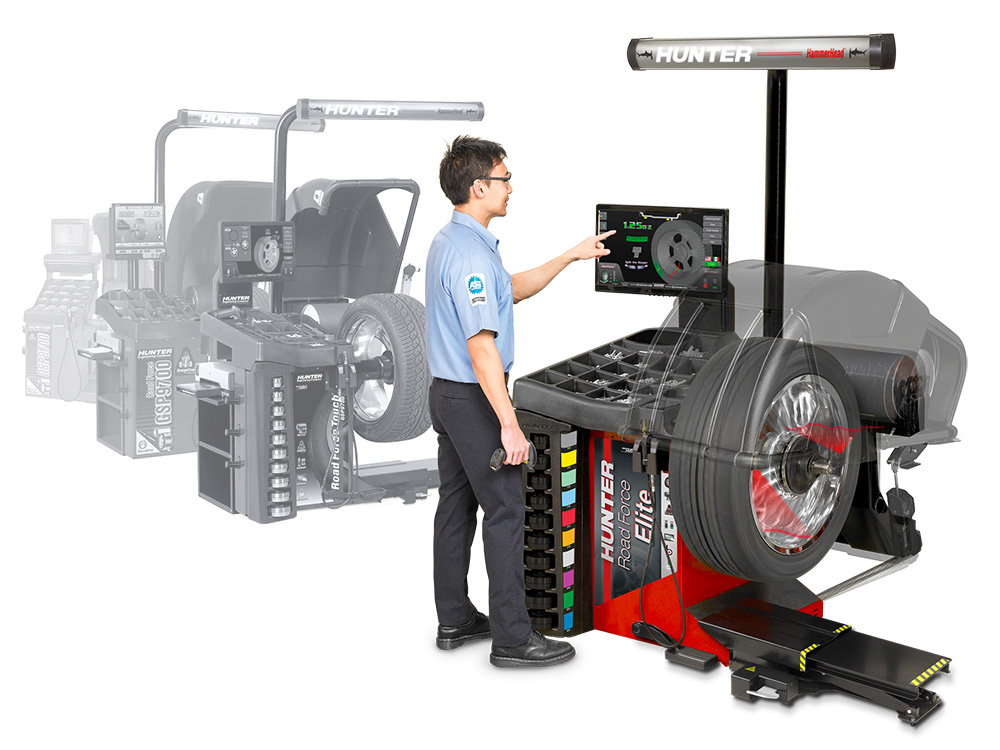
When you’re investing in tires—whether it’s a seasonal tire swap or a brand-new set—tire balancing is one of the most important steps to ensure your vehicle rides smoothly, safely, and efficiently.
At SwitchTire & Brake, with locations on Reid Street in Peterborough, Platinum Road in Mississauga, and opening soon on Taunton Road in Oshawa, we go beyond the basics.
We’ve invested in the latest Road Force Balancing technology to give our customers the best tire performance possible. Here’s what you need to know about Road Force vs. standard tire balancing you would get from other tire shops, and why it matters to your drive.
What Is Tire Balancing and Why Is It Important?
Tire balancing ensures that the weight of your wheel-and-tire assembly is distributed evenly. When tires are properly balanced, you experience:
- Smoother driving
- Reduced vibration
- Even tire wear
- Improved fuel efficiency
Unbalanced tires, on the other hand, can cause annoying vibrations, premature tire wear, and even stress on your suspension.
Standard Tire Balancing: The Basics
Standard tire balancing is performed by spinning your tires on a machine to detect weight differences, then applying small counterweights to balance the wheel. While it works well in many cases, it doesn’t account for road pressure or hidden tire imperfections.
What Is Road Force Balancing?
Road Force Balancing is the most advanced tire balancing technology available. It uses a machine that applies pressure to simulate actual road conditions while spinning the tire. This reveals issues that standard balancing simply can’t detect, including:
- Tires that aren’t perfectly round (radial runout)
- Uneven stiffness in the tire (force variation)
- Mounting issues between the tire and the rim
This level of precision means you get a vibration-free ride, even at highway speeds. Some shops that do have this technology charge more for this balance, but it is part of our regular service at SwitchTire.
Why SwitchTire Invested in Road Force Technology
At SwitchTire, we’ve equipped our locations with the Hunter Road Force Elite Balancer—a machine trusted by OEMs, luxury dealerships, and performance shops.
It costs nearly twice as much as a standard balancer, and we made that investment for one reason: Because our customers deserve the best.
Benefits of Road Force Balancing at SwitchTire
- Smoother, quieter driving experience
- Longer-lasting tires with even wear
- Enhanced vehicle handling and control
- Reduced risk of tire-related vibration complaints
- Increased customer satisfaction and safety
When you choose Road Force Balancing, you’re not just getting a premium service—you’re protecting your vehicle and maximizing the life of your tire investment.
Highly Trained Technicians. Premium Equipment. Exceptional Results
What sets SwitchTire apart is more than just our technology—it’s our people. Our technicians are TIA-certified and trained to deliver precision tire service using the most advanced tools available. We’re here to ensure:
- Careful tire handling with damage-free equipment
- Accurate diagnostics and balancing
- Fast, efficient service that respects your time
Whether you’re in Mississauga, Peterborough, or soon to be in Oshawa, our goal is to deliver the best tire service every visit.
If you’re looking for the best tire balancing near you, look no further than SwitchTire & Brake. Whether it’s a tire change, rotation, or new tire installation, trust us to give your vehicle the smoothest and safest ride possible.
📍 Peterborough – 646 Reid St. | 705-748-9500 | peterborough@switchtire.ca
📍 Mississauga – 3663 Platinum Dr. | 905-820-9889 | mississauga@switchtire.ca
Coming Soon
📍 Oshawa – Taunton Road | 905-721-0180 | oshawa@switchtire.ca
